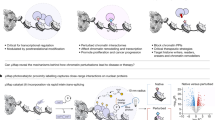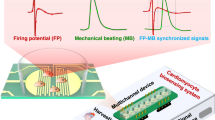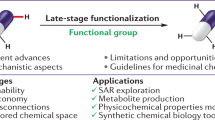Abstract
Cardiovascular diseases, neuropsychiatric disorders, and cancers seriously endanger human health. Mechanistic and pharmacological mechanisms of candidate drugs are central to the translational paradigm. Since many signal transduction and molecular events are implicated in these diseases, a novel method to interrogate the key pharmacological mechanisms is required to accelerate innovative drug discovery. Much attention now focuses on the real-time visualization of molecular disease events to yield new insights to the pathogenesis of the diseases. This review focuses on recent advances in the development of chemical probes for imaging pathological events to facilitate the study of the underlying pharmacodynamics and toxicity involved. As reviewed here, optical imaging is now frequently viewed as an indispensable technique in the field of biological research. Promoting interdisciplinary collaboration among chemistry, biology and medicine, is necessary to further refine functional fluorescent probes for diagnostic and therapeutic applications.
Similar content being viewed by others
Log in or create a free account to read this content
Gain free access to this article, as well as selected content from this journal and more on nature.com
or
References
Han F, Chen YX, Lu YM, Huang JY, Zhang GS, Tao RR, et al. Regulation of the ischemia-induced autophagy-lysosome processes by nitrosative stress in endothelial cells. J Pineal Res. 2011;51:124–35.
Wang H, Hong LJ, Huang JY, Jiang Q, Tao RR, Tan CH, et al. P2RX7 sensitizes Mac-1/ICAM-1-dependent leukocyte-endothelial adhesion and promotes neurovascular injury during septic encephalopathy. Cell Res. 2015;25:674–90.
Wang ZY, Qin W, Yi F. Targeting histone deacetylases: perspectives for epigenetic-based therapy in cardio-cerebrovascular disease. J Geriatr Cardiol. 2015;12:153–64.
Liang XG, Chen B, Shao LX, Cheng J, Huang MZ, Chen Y, et al. A fluorogenic probe for ultrafast and reversible detection of formaldehyde in neurovascular tissues. Theranostics. 2017;7:2305–13.
Tao RR, Ji YL, Lu YM, Fukunaga K, Han F. Targeting nitrosative stress for neurovascular protection: new implications in brain diseases. Curr Drug Targets. 2012;13:272–84.
Wang R, Yin YX, Qaisar Mahmood, Wang XJ, Gao YP, Gou GJ, et al. Calmodulin inhibitor ameliorates cognitive dysfunction via inhibiting nitrosative stress and NLRP3 signaling in mice with bilateral carotid artery stenosis. CNS Neurosci Ther. 2017;23:818–26.
Jiang Q, Gao YP, Wang CK, Tao RR, Wu Y, Zhan KY, et al. Nitration of TRPM2 as a molecular switch induces autophagy during brain pericyte injury. Antioxid Redox Signal. 2017;27:1297–316.
Liao Y, Lu B, Ma Q, Wu G, Lai XR, Zhang JS, et al. Human neuropeptide S receptor is activated via a Gαq protein-biased signaling cascade by a human neuropeptide S analog lacking the C-terminal 10 residues. J Biol Chem. 2016;291:7505–16.
Li M, Zhou ZP, Sun ML, Cao LJ, Chen JY, Qin YY, et al. Reduced nicotinamide adenine dinucleotide phosphate, a pentose phosphate pathway product, might be a novel drug candidate for ischemic stroke. Stroke. 2016;47:187–95.
Liu J, Yang J, Wen J, Yang Y, Wei X, Zhang X, et al. Mutational analysis of dimeric linkers in peri- and cytoplasmic domains of histidine kinase DctB reveals their functional roles in signal transduction. Open Biol. 2014;4:140023.
Wang H, Xu T, Jiang Y, Xu H, Yan Y, Fu D, et al. The challenges and the promise of molecular targeted therapy in malignant gliomas. Neoplasia. 2015;17:239–55.
Gong DM, Zhang YL, Chen DY, Hong LJ, Han F, Liu QB, et al. Endothelial GPR124 exaggerates the pathogenesis of atherosclerosis by activating inflammation. Cell Physiol Biochem. 2018;45:547–57.
Moriguchi S, Ishizuka T, Yabuki Y, Shioda N, Sasaki Y, Tagashira H, et al. Blockade of the KATP channel Kir6.2 by memantine represents a novel mechanism relevant to Alzheimer’s disease therapy. Mol Psychiatry. 2018;23:211–21.
Lu NN, Tan C, Sun NH, Shao LX, Liu XX, Gao YP, et al. Cholinergic Grb2-associated-binding protein 1 regulates cognitive function. Cereb Cortex. 2018;28:2391–404.
Li X, Tao RR, Hong LJ, Cheng J, Jiang Q, Lu YM, et al. Visualizing peroxynitrite fluxes in endothelial cells reveals the dynamic progression of brain vascular injury. J Am Chem Soc. 2015;137:12296–303.
Huang JY, Tian Y, Wang HJ, Shen H, Wang H, Long S, et al. Functional genomic analyses identify pathways dysregulated in animal model of autism. CNS Neurosci Ther. 2016;22:845–53.
Rutz C, Klein W, Schulein R. N-terminal signal peptides of G protein-coupled receptors: significance for receptor biosynthesis, trafficking, and signal transduction. Prog Mol Biol Transl Sci. 2015;132:267–87.
Prescher JA, Bertozzi CR. Chemistry in living systems. Nat Chem Biol. 2005;1:13–21.
Ben NG, Sharon M. Regulating the 20S proteasome ubiquitin-independent degradation pathway. Biomolecules. 2014;4:862–84.
Rinnerthaler M, Bischof J, Streubel MK, Trost A, Richter K. Oxidative stress in aging human skin. Biomolecules. 2015;5:545–89.
Stavraka C, Blagden S. The La-related proteins, a family with connections to cancer. Biomolecules. 2015;5:2701–22.
Kojetin DJ, Burris TP. Small molecule modulation of nuclear receptor conformational dynamics: implications for function and drug discovery. Mol Pharmacol. 2013;83:1–8.
Ding F, Xiao H, Wang M, Xie X, Hu F. The role of the ubiquitin-proteasome pathway in cancer development and treatment. Front Biosci. 2014;19:886–95.
Bassermann F, Eichner R, Pagano M. The ubiquitin proteasome system– implications for cell cycle control and the targeted treatment of cancer. Biochim Biophys Acta. 2014;1843:150–62.
Sun Y, Liu WZ, Liu T, Feng X, Yang N, Zhou HF. Signaling pathway of MAPK/ERK in cell proliferation, differentiation, migration, senescence and apoptosis. J Recept Signal Transduct Res. 2015;35:600–4.
Hong D, Yang Z, Han S, Liang X, Ma K, Zhang X. Interleukin 1 inhibition with anakinra in adult-onset still disease: a meta-analysis of its efficacy and safety. Drug Des Deve Ther. 2014;8:2345–57.
Behar M, Barken D, Werner SL, Hoffmann A. The dynamics of signaling as a pharmacological target. Cell. 2013;155:1016.
Warrier S, Kharkar PS. Fluorescent probes for biomedical applications (2009–14). Pharm Pat Anal. 2014;35:543–60.
Komatsu T, Urano Y. Evaluation of enzymatic activities in living systems with small-molecular fluorescent substrate probes. Anal Sci. 2015;31:257–65.
Lu R. Reaction-based small-molecule fluorescent probes for dynamic detection of ROS and transient redox changes in living cells and small animals. J Mol Cell Cardiol. 2017;110:96–108.
Li H, Wan A. Fluorescent probes for real-time measurement of nitric oxide in living cells. Analyst. 2015;140:7129–41.
Khanal G, Somaweera H, Dong M, Germain T, Ansari M, Pappas D. Detection of apoptosis using fluorescent probes. Methods Mol Biol. 2015;1292:151–61.
Chen X, Bi Y, Wang T, Li P, Yan X, Hou S, et al. Lysosomal targeting with stable and sensitive fluorescent probes (Superior LysoProbes): applications for lysosome labeling and tracking during apoptosis. Sci Rep. 2015;5:9004.
Pan D, Hu Z, Qiu F, Huang ZL, Ma Y, Wang Y, et al. A general strategy for developing cell-permeable photo-modulatable organic fluorescent probes for live-cell super-resolution imaging. Nat Commun. 2014;5:5573.
Zhou K, Ren M, Wang L, Li Z, Lin W. A targetable fluorescent probe for real-time monitoring of fluoride ions in mitochondria. Spectrochim Acta A Mol Biomol Spectrosc. 2018;204:777–82.
Hu TM, Chiu SJ, Hsu YM. Nitroxidative chemistry interferes with fluorescent probe chemistry: implications for nitric oxide detection using 2,3-diaminonaphthalene. Biochem Biophys Res Commun. 2014;451:196–201.
Zhu JH, Yu C, Chen Y, Shin J, Cao QY, Kim JS, et al. A self-assembled amphiphilic imidazolium-based ATP probe. Chem Commun (Camb). 2017;53:4342–5.
Xiao YS, Guo L, Wang Y. Isotope-coded ATP probe for quantitative affinity profiling of ATP-binding proteins. Anal Chem. 2013;85:7478–86.
Fang Y, Shi W, Hu Y, Li X, Ma H. A dual-function fluorescent probe for monitoring the degrees of hypoxia in living cells via the imaging of nitroreductase and adenosine triphosphate. Chem Commun (Camb). 2018;54:5454–7.
Kumar A, Prasher P, Singh P. A fluorescent probe for estimation of adenosine diphosphate and monitoring of glucose metabolism. Org Biomol Chem. 2014;12:3071–9.
Yue Y, Huo F, Ning P, Zhang Y, Chao J, Meng X, et al. Dual-site fluorescent probe for visualizing the metabolism of Cys in living cells. J Am Chem Soc. 2017;139:3181–5.
Liao MH, Xiang YC, Huang JY, Tao RR, Tian Y, Ye WF, et al. The disturbance of hippocampal CaMKII/PKA/PKC phosphorylation in early experimental diabetes mellitus. CNS Neurosci Ther. 2013;19:329–36.
Tsien RY. New calcium indicators and buffers with high selectivity against magnesium and protons: design, synthesis, and properties of prototype structures. Biochemistry. 1980;19:2396–404.
Oheim M, Van’t HM, Feltz A, Zamaleeva A, Mallet JM, Collot M. New red-fluorescent calcium indicators for optogenetics, photoactivation and multi-color imaging. Biochim Biophys Acta. 2014;1843:2284–306.
Egawa T, Hirabayashi K, Koide Y, Kobayashi C, Takahashi N, Mineno T, et al. Red fluorescent probe for monitoring the dynamics of cytoplasmic calcium ions. Angew Chem Int Ed Engl. 2013;52:3874–7.
Li YD, Chou CT, Liang WZ, Tseng HW, Fang YC, Hung TY, et al. Effect of NPC-14686 (fmoc-l-homophenylalanine) on Ca2+ homeostasis and viability in OC2 human oral cancer cells. Chin J Physiol. 2015;58:285–93.
Zhang L, Chen S, Zhao Q, Huang H. Carbon dots as a fluorescent probe for label-free detection of physiological potassium level in human serum and red blood cells. Anal Chim Acta. 2015;880:130–5.
Schwarze T, Schneider R, Riemer J, Holdt HJ. A highly K(+) -selective fluorescent probe - tuning the K(+) -complex stability and the K(+) /Na(+) selectivity by varying the lariat-alkoxy unit of a phenylaza[18]crown-6 ionophore. Chem Asian J. 2016;11:241–7.
Hirata T, Terai T, Yamamura H, Shimonishi M, Komatsu T, Hanaoka K, et al. Protein-coupled fluorescent probe to visualize potassium ion transition on cellular membranes. Anal Chem. 2016;88:2693–2700.
Wang CK, Ahemd MM, Jiang Q, Lu NN, Tan C, Gao YP, et al. Melatonin ameliorates hypoglycemic stress-induced brain endothelial tight junction injury by inhibiting protein nitration of TP53-induced glycolysis and apoptosis regulator. J Pineal Res 2017; 63. https://doi.org/10.1111/jpi.12440.
Gill PS, Wilcox CS. NADPH oxidases in the kidney. Antioxid Redox Signal. 2006;8:1597–607.
Wang CK, Cheng J, Liang XG, Tan C, Jiang Q, Hu YZ, et al. A H2O2-responsive theranostic probe for endothelial injury imaging and protection. Theranostics. 2017;7:3803–13.
Stocker S, Van LK, Mijuskovic A, Dick TP. The conundrum of hydrogen peroxide signaling and the emerging role of peroxiredoxins as redox relay hubs. Antioxid Redox Signal. 2018;28:558–73.
De DX, Corvilain B, Dumont JE, Miot F. Roles of DUOX-mediated hydrogen peroxide in metabolism, host defense, and signaling. Antioxid Redox Signal. 2014;20:2776–93.
Roma LP, Deponte M, Riemer J, Morgan B. Mechanisms and applications of redox-sensitive green fluorescent protein-based hydrogen peroxide probes. Antioxid Redox Signal. 2018;29:552–68.
Wen Y, Xue FF, Lan HC, Li ZH, Xiao SZ, Yi T. Multicolor imaging of hydrogen peroxide level in living and apoptotic cells by a single fluorescent probe. Biosens Bioelectron. 2017;91:115–21.
Du F, Min Y, Zeng F, Yu C, Wu S. A targeted and FRET-based ratiometric fluorescent nanoprobe for imaging mitochondrial hydrogen peroxide in living cells. Small. 2014;10:964–72.
Brewer TF, Garcia FJ, Onak CS, Carroll KS, Chang CJ. Chemical approaches to discovery and study of sources and targets of hydrogen peroxide redox signaling through NADPH oxidase proteins. Annu Rev Biochem. 2015;84:765–90.
Wang R, Han X, You J, Yu F, Chen L. Ratiometric near-infrared fluorescent probe for synergistic detection of monoamine oxidase B and its contribution to oxidative stress in cell and mice aging models. Anal Chem. 2018;90:4054–61.
Han F, Tao RR, Zhang GS, Lu YM, Liu LL, Chen YX, et al. Melatonin ameliorates ischemic-like injury-evoked nitrosative stress: Involvement of HtrA2/PED pathways in endothelial cells. J Pineal Res. 2011;50:281–91.
Flemmig J, Zschaler J, Remmler J, Arnhold J. The fluorescein-derived dye aminophenyl fluorescein is a suitable tool to detect hypobromous acid (HOBr)-producing activity in eosinophils. J Biol Chem. 2012;287:27913–23.
Paulander W, Wang Y, Folkesson A, Charbon G, Lobner-olesen A, Ingmer H, et al. Bactericidal antibiotics increase hydroxyphenyl fluorescein signal by altering cell morphology. PLoS ONE. 2014;9:e92231.
Price M, Reiners JJ, Santiago AM, Kessel D. Monitoring singlet oxygen and hydroxyl radical formation with fluorescent probes during photodynamic therapy. Photochem Photobiol. 2009;85:1177–81.
Yang D, Wang HL, Sun ZN, Chung NW, Shen JG. A highly selective fluorescent probe for the detection and imaging of peroxynitrite in living cells. J Am Chem Soc. 2006;128:6004–5.
Sun ZN, Wang HL, Liu FQ, Chen YT, Paul KH, Yang D. BODIPY-based fluorescent probe for peroxynitrite detection and imaging in living cells. Org Lett. 2009;11:1887–90.
Peng T, Yang D. HKGreen-3: a rhodol-based fluorescent probe for peroxynitrite. Org Lett. 2010;12:4932–5.
Zhang Q, Zhang N, Long YT, Qian X, Yang Y. Understanding the selectivity of a multichannel fluorescent probe for peroxynitrite over hypochlorite. Bioconjug Chem. 2016;27:341–53.
Cheng D, Pan Y, Wang L, Zeng ZB, Yuan L, Zhang X, et al. Selective visualization of the endogenous peroxynitrite in an inflamed mouse model by a mitochondria-targetable two-photon ratiometric fluorescent probe. J Am Chem Soc. 2017;139:285–92.
Li SS, Pan HY, Tan C, Sun YP, Song YR, Zhang X, et al. Mitochondrial dysfunctions contribute to hypertrophic cardiomyopathy in patient iPSC-derived cardiomyocytes with MT-RNR2 mutation. Stem Cell Rep. 2018;10:808–21.
Liu QB, Liu LL, Lu YM, Tao RR, Huang JY, Han F, et al. The induction of reactive oxygen species and loss of mitochondrial Omi/HtrA2 is associated with S-nitrosoglutathione-induced apoptosis in human endothelial cells. Toxicol Appl Pharmacol. 2010;244:374–84.
Wu XX, Sun S, Wang YH, Zhu JL, Jiang K, Leng YM, et al. A fluorescent carbon-dots-based mitochondria-targetable nanoprobe for peroxynitrite sensing in living cells. Biosens Bioelectron. 2017;90:501–7.
Shchepinova MM, Cairns AG, Prime TA, Logan A, James AM, Hall AR, et al. MitoNeoD: a mitochondria-targeted superoxide probe. Cell Chem Biol. 2017;24:1285–98.
Han X, Wang R, Song X, Yu F, Chen L. Evaluation selenocysteine protective effect in carbon disulfide induced hepatitis with a mitochondrial targeting ratiometric near-infrared fluorescent probe. Anal Chem. 2018;90:8108–15.
Schmidt RL, Simonovic M. Synthesis and decoding of selenocysteine and human health. Croat Med J. 2012;53:535–50.
Tak PP, Firestein GS. NF-kappaB: a key role in inflammatory diseases. J Clin Invest. 2001;107:7–11.
Baracca A, Sgarbi G, Solaini G, Lenaz G. Rhodamine 123 as a probe of mitochondrial membrane potential: evaluation of proton flux through F(0) during ATP synthesis. Biochim Biophys Acta. 2003;1606:137–46.
Hirosawa S, Arai S, Takeoka S. A TEMPO-conjugated fluorescent probe for monitoring mitochondrial redox reactions. Chem Commun (Camb). 2012;48:4845–7.
Lu NN, Liu J, Tian Y, Liao MH, Wang H, Lu YM, et al. Atg5 deficit exaggerates the lysosome formation and cathepsin B activation in mice brain after lipid nanoparticles injection. Nanomedicine. 2014;10:1843–52.
Iwashita H, Sakurai HT, Nagahora N, Ishiyama M, Shioji K, Sasamoto K, et al. Small fluorescent molecules for monitoring autophagic flux. FEBS Lett. 2018;592:559–67.
Enriquez SR, Kim I, Currin RT, Lemasters JJ. Tracker dyes to probe mitochondrial autophagy (mitophagy) in rat hepatocytes. Autophagy. 2006;2:39–46.
Chen JJ, Jing J, Chang H, Rong YG, Hai Y, Tang J, et al. A sensitive and quantitative autolysosome probe for detecting autophagic activity in live and prestained fixed cells. Autophagy. 2013;9:894–904.
Jiang J, Tian X, Xu C, Wang S, Feng Y, Chen M, et al. A two-photon fluorescent probe for real-time monitoring of autophagy by ultrasensitive detection of the change in lysosomal polarity. Chem Commun (Camb). 2017;53:3645–8.
Tang Y, Kong X, Xu A, Dong B, Lin W. Development of a two-photon fluorescent probe for imaging of endogenous formaldehyde in living tissues. Angew Chem Int Ed Engl. 2016;55:3356–9.
Tang Y, Kong X, Liu ZR, Xu A, Lin W. Lysosome-targeted turn-on fluorescent probe for endogenous formaldehyde in living cells. Anal Chem. 2016;88:9359–63.
Bruemmer KJ, Brewer TF, Chang CJ. Fluorescent probes for imaging formaldehyde in biological systems. Curr Opin Chem Biol. 2017;39:17–23.
Tang Y, Ma Y, Xu A, Xu G, Lin W. A turn-on fluorescent probe for endogenous formaldehyde in the endoplasmic reticulum of living cells. Methods Appl Fluoresc. 2017;5:24005.
Dou K, Chen G, Yu F, Liu Y, Chen L, Cao Z, et al. Bright and sensitive ratiometric fluorescent probe enabling endogenous FA imaging and mechanistic exploration of indirect oxidative damage due to FA in various living systems. Chem Sci. 2017;8:7851–61.
Liang XG, Cheng J, Qin S, Shao LX, Huang MZ, Wang G, et al. Conformational restraint as a strategy for navigating towards lysosomes. Chem Commun (Camb). 2018;54:12010–3.
Acknowledgements
This work was supported in part by National Key Research and Development Program of China (2016YFE0125400 to Feng Han) and National Natural Science Foundations of China (81120108023).
Author information
Authors and Affiliations
Corresponding authors
Ethics declarations
Competing interests
The authors declare no competing interests.
Rights and permissions
About this article
Cite this article
Lu, L., Wu, Zy., Li, X. et al. State-of-the-art: functional fluorescent probes for bioimaging and pharmacological research. Acta Pharmacol Sin 40, 717–723 (2019). https://doi.org/10.1038/s41401-018-0190-8
Received:
Accepted:
Published:
Issue date:
DOI: https://doi.org/10.1038/s41401-018-0190-8
Keywords
This article is cited by
-
Perovskite quantum dots modulating upconversion nanomaterials for cancer early detections
Cancer Nanotechnology (2023)
-
Delineation and detection of breast cancer using novel label-free fluorescence
BMC Medical Imaging (2023)
-
Fluorescent A2A and A3 adenosine receptor antagonists as flow cytometry probes
Purinergic Signalling (2023)
-
Acceptor substrate determines donor specificity of an aromatic prenyltransferase: expanding the biocatalytic potential of NphB
Applied Microbiology and Biotechnology (2020)



